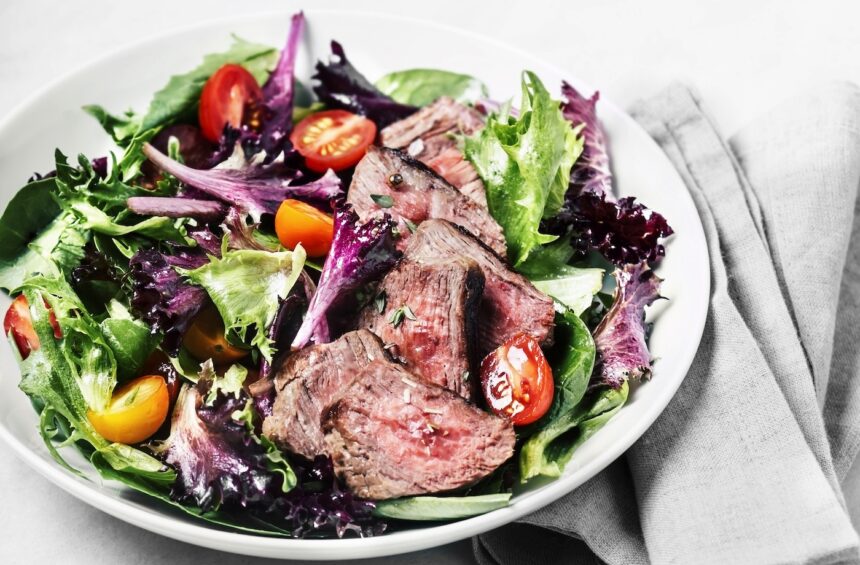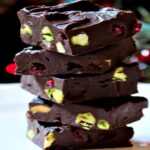The typical keto diet macros are: 75 to 80 percent of calories from fat, 15 to 20 percent from protein, and only 5 to 10 percent from carbs, says Sam Presicci, MCN, RD, LD, CPT, lead registered dietitian at Snap Kitchen. People might play with those macros depending on their particular health goals and needs, or on their particular interpretation of keto; the “Ketotarian” diet, which advocates for a more plant-based approach, allows for up to 15 percent of calories from carbohydrates.
Why the intense focus on macros, you ask? Basically, this is the ratio of fats to carbs that allows a person to achieve ketosis—when the body switches from burning carbohydrates to fats as its primary source of energy. Ketosis “unlocks” keto’s main potential health benefits, from effective weight management to balanced blood sugar, reduced inflammation, and increased mental clarity. Thus, how you build your plate at mealtime is key to ensuring you stay in ketosis and maintain adequate nutrition.
“Done correctly, a healthy keto diet will consist of lots of well-raised animal proteins (like grass-fed beef, pastured chicken and wild-caught seafood), healthy fats (including avocados, extra virgin olive oil, nuts/seeds, olives, coconuts, etc) and non-starchy vegetables for fiber and micronutrients,” Presicci says.
If you’ve just started keto or you’re thinking about it, here’s how to portion out your favorite veggies, carbs (whatever you can eat), protein, and fats to satisfy your hunger and burn those ketones.

Prioritize healthy fats throughout your plate
This is trickier to judge, since Presicci says healthy fat should be incorporated in all parts of a keto meal. “The plate will look like it consists of one-fourth fat, but keep in mind that your veggies will be topped with fat and your meat may also have fat. So really, fat is dispersed across your plate rather than just in one spot,” she says.
“In terms of healthy fats, some great options include avocado oil, coconut oil, avocados, coconut, olives, extra virgin olive oil, grass-fed ghee or butter, and pastured animal fats,” she says. Use these for dressings and cooking techniques, as well as high-fat choices for proteins or protein toppers (think avocado on a burger). You can also snack on fats for snacks, like nut butter or MCT oil in a smoothie.
Load up on vegetables
On keto, non-starchy veggies should take up half your plate. Think lots of leafy greens, bok choy, cucumber, zucchini, cauliflower, asparagus, mushrooms, and tomatoes. “Vegetables contain vital micronutrients like fiber, folate, B vitamins, calcium, as well as a vast array of antioxidants,” she says, so they’re super good for you.
However: “Keep in mind that even though veggies may take up half your plate, they are not calorically dense and therefore don’t actually amount to much of the macronutrient distribution,” Presicci says. Thus, you’ll need to add ample fats and proteins to adequately fuel up. Top your vegetables with (or cook them in) healthy fats like avocado oil, ghee, or extra virgin olive oil for extra fats to burn ketones and to keep you fuller longer.
Keep your carbs to a minimum
Presicci adds that the only carbs a person eats on the keto diet should come from vegetables (think sweet potatoes and other starchy options). You can also get carbs on occasion from low-sugar fruits like blackberries or apricots, provided they don’t push your allotted carb macros over their daily limit. For that reason, Presicci doesn’t really give a set ratio for carbs, but rather includes the carb count within your half-plate of veggies, however it may fit.
For more intel on the keto diet, watch top dietitian Tracy Lockwood Beckerman spill the MCT oil…er, tea:
Don’t go overboard on protein
There’s a common perception that the keto diet involves massive amounts of steak, bacon, and other fatty meat. In reality, Presicci says up to a fourth of your plate should be protein. “The type of protein depends on preferences, but it’s always recommended to source the best quality you can afford. Since those following a keto diet may be eating higher fat meats, it’s particularly important to aim for high-quality meats, since things like hormones, antibiotics and toxins end up in the animal’s fat,” she says. She also recommends not going overboard on red meat for the sake of heart health and instead prioritizing leaner meats like chicken and fish for your day-to-day eating. Load up on eggs, avocado, nuts, and tempeh if you’re on keto but limiting meat intake.
What does a sample plate look like?
To recap, a very generalized example of a healthy keto plate would be half vegetables, a fourth protein, and a fourth healthy fats (with more fats incorporated throughout).
Some sample keto meal ideas: Fill your plate with sautéed mushrooms, bok choy, and asparagus cooked in grass-fed ghee, then add a three-ounce serving of grass-fed sirloin steak cooked in a small pat of pastured butter (or swap the beef for skin-on chicken thighs). Or you could roast zucchini and tomatoes in avocado oil, then serve with skin-on cooked salmon with a creamy sauce on top. Breakfast could consist of a veggie omelette with some cheese, cooked in olive oil or pastured butter.
“The plate can stay consistent for all meals, since the macros are the same whether you’re eating breakfast, lunch, or dinner. Some people may practice intermittent fasting and not eat breakfast, but that still doesn’t impact what their plate looks like when they do eat,” Presicci says. Consistency is key for achieving and maintaining ketosis—which hopefully should make things easier for meal prep, too.
Looking for more keto food inspo? You’ll want to try these air fryer recipes. Oh, and these keto Instant Pot recipes are pretty great, too.









